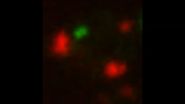Male and female brains aren't equal when it comes to fat
2014-10-16
(Press-News.org) Researchers have found that male and female brains respond in remarkably different ways to high-fat meals. Those differences in the brain lead to greater inflammation and increased health risks in males that indulge on fatty foods in comparison to females, a new study in mice shows. The findings reported in the Cell Press journal Cell Reports on October 16th may help to explain observed differences in obesity outcomes between women and men – premenopausal women carrying extra weight fare better than men do – and suggest that dietary advice should be made more sex-specific.
"Our findings, for the first time, suggest that males and females respond to high-fat diets differently," said Deborah Clegg of the Cedar-Sinai Diabetes And Obesity Research Institute in Los Angeles. "The data would suggest that is probably 'ok' for females to occasionally have a high-fat meal, where it is not recommended for males.
"The way we treat patients and provide dietary and nutritional advice should be altered. We might be less concerned about an occasional hamburger for women, but for men, we might more strongly encourage avoidance, especially if they have pre-existing diseases such as heart disease or type 2 diabetes."
Earlier data from Clegg's team and others had suggested that inflammation in the brain is tied to overeating, blood sugar imbalances, and increased inflammation in other parts of the body, including fat tissue. Those effects can be triggered, in males in particular, by short-term exposure to a high-fat diet.
The researchers say they were initially shocked to discover that male and female brains differ in their fatty acid composition. When they manipulated male mouse brains to have the fatty acid profile of females, they found that those animals were protected from the ill effects of a diet high in fat.
When males with average male brains entered an inflammatory state after eating diets high in fat, they also suffered from reduced cardiac function in a way that female animals in the study did not. Those sex differences in the brain's response to fat are related to differences between females and males in estrogen and estrogen receptor status.
Clegg says her team is now working out a strategy to confirm whether the findings in mice apply to people too. If they do, there will be some very immediate practical implications for what men and women should put on their plates.
"We have always had 'one size fits all' with respect to our nutritional information and our pharmaceutical approach," Clegg said. "Our data begin to suggest that sex should be factored in, and men should be more closely monitored for fat intake and inflammation than women."
INFORMATION:
Cell Reports, Morselli et al.: "Hypothalamic PGC-1alpha Protects Against High Fat Diet Exposure by Regulating ERalpha."
ELSE PRESS RELEASES FROM THIS DATE:
2014-10-16
Two closely related viruses that have been introduced to northern Spain in recent years have already led to the collapse of three different species of amphibian—the common midwife toad, the common toad, and the alpine newt—in the protected area of Picos de Europa (literally "Peaks of Europe") National Park. In all, six amphibian species have suffered from severe disease and mass mortality as a result of the outbreak, and researchers who report their findings in the Cell Press journal Current Biology on October 16 say that the viruses appear to be on the move. ...
2014-10-16
Scientists tracing the real-time impact of viruses in the wild have found that entire amphibian communities are being killed off by closely related viruses introduced to mountainous areas of northern Spain.
Researchers from UCL, Zoological Society of London (ZSL) and Queen Mary University of London (QMUL) in the UK, and the National Museum of Natural Sciences (MNCN-CSIC) in Madrid, Spain found the viruses are causing severe disease and mass deaths in many amphibian species sampled, including frogs and salamanders. The common midwife toad, common toad and alpine newt ...
2014-10-16
A newly discovered population of immune cells in tumors is associated with less severe cancer outcomes in humans, and may have therapeutic potential, according to a new UC San Francisco study of 3,600 human tumors of 12 types, as well as mouse experiments.
The research is published online October 16, 2014 in the journal Cancer Cell.
Molecules associated with these cells, newly identified by the UCSF researchers, could be the focus of new immunotherapies that are more precisely targeted than current immunotherapies now in clinical trials, said Matthew Krummel, PhD, professor ...
2014-10-16
Choosing between two good things can be tough. When animals must decide between feeding and mating, it can get even trickier. In a discovery that might ring true even for some humans, researchers have shown that male brains – at least in nematodes – will suppress the ability to locate food in order to instead focus on finding a mate.
The results, which appear today in the journal Current Biology, may point to how subtle changes in the brain's circuitry dictate differences in behavior between males and females.
"While we know that human behavior is influenced ...
2014-10-16
Stanford, CA—When it comes to cellular architecture, function follows form.
Plant cells contain a dynamic cytoskeleton which is responsible for directing cell growth, development, movement, and division. So over time, changes in the cytoskeleton form the shape and behavior of cells and, ultimately, the structure and function of the organism as a whole. New work led by Carnegie's David Ehrhardt hones in on how one particular organizational protein influences cytoskeletal and cellular structure in plants, findings that may also have implications for cytoskeletal ...
2014-10-16
KANSAS CITY, MO — Scientists at the Stowers Institute for Medical Research have made a surprising finding about the aggregates of misfolded cellular proteins that have been linked to aging-related disorders such as Parkinson's disease. The researchers report their results in the October 16, 2014 online issue of the journal Cell.
Using 3-D time-lapse movies to track the fate of misfolded proteins in yeast cells, the researchers determined that about 90 percent of aggregates form on the surface of the endoplasmic reticulum (ER), a location of protein synthesis in ...
2014-10-16
DURHAM, N.C. -- Across the animal kingdom, it's not uncommon for pregnancy to change an expectant mom's behavior. Even female flies have their own rudimentary way of "nesting," which appears to be brought on by the stretch of their egg-filled abdomens rather than the act of mating, according to a Duke study published online October 16 in Cell Reports.
After mating, the female fruit fly Drosophila melanogaster dramatically shifts priorities as she prepares to lay eggs.
"For example, the virgin flies are interested in sex. Once they're mated, it's very striking -- they ...
2014-10-16
SOLOMONS, MD (October 16, 2014)--Offshore wind power is a valuable source of renewable energy that can help reduce carbon emissions. Technological advances are allowing higher capacity turbines to be installed in deeper water, but there is still much unknown about the effects on the environment. In a recent paper, University of Maryland Center for Environmental Science researcher Helen Bailey and colleagues review the potential impacts of offshore wind developments on marine species and make recommendations for future monitoring and assessment as interest in offshore wind ...
2014-10-16
(SALT LAKE CITY)—University of Utah scientists have identified two microRNA molecules that control chronic inflammation, a discovery that one day may help researchers prevent certain fatal or debilitating conditions before they start.
"We're living at a time where the aging population is growing," said Ryan O'Connell, D.Phil., assistant professor of pathology, whose lab made the discovery. "The question is: how can we predict and prevent the onset of disorders that emerge upon growing older?"
The research will be published this Thursday in Immunity, a top immunology ...
2014-10-16
LA JOLLA, CA—October 16, 2014—Scientists at The Scripps Research Institute (TSRI) have identified the long-sought activating molecules for a rare but crucial subset of immune system cells that help rally other white blood cells to fight infection.
In the process, the team also uncovered a previously unsuspected link between the mammalian immune system and the communication systems of simpler organisms such as bacteria.
The findings, published online ahead of print on October 16 by the journal Immunity, could lead to novel therapeutic approaches for diseases ...
LAST 30 PRESS RELEASES:
[Press-News.org] Male and female brains aren't equal when it comes to fat




